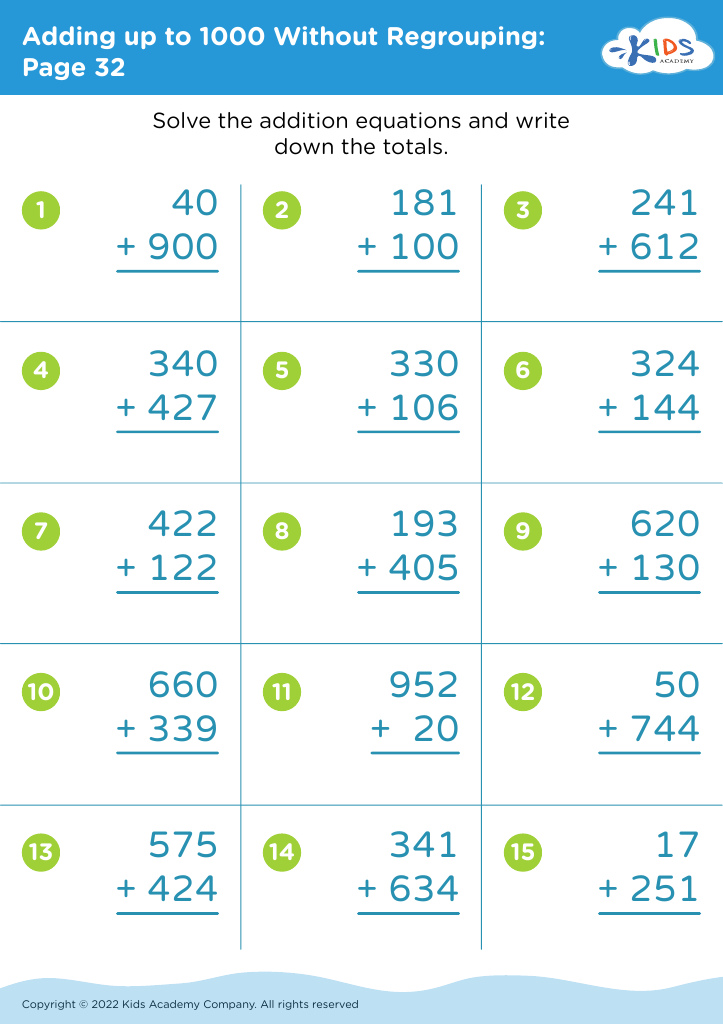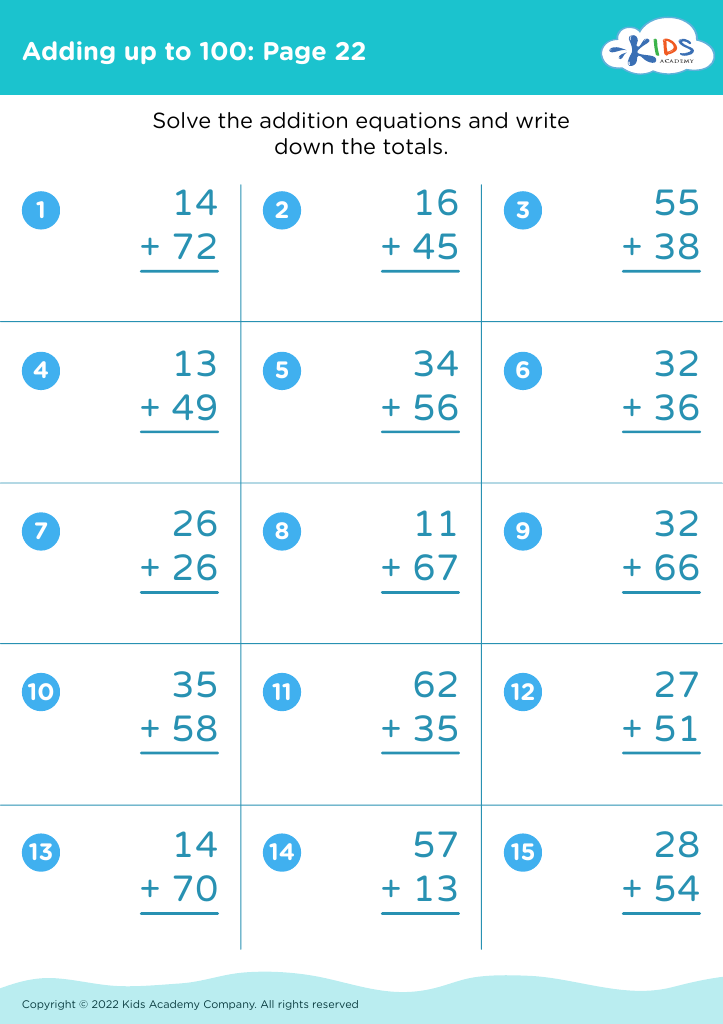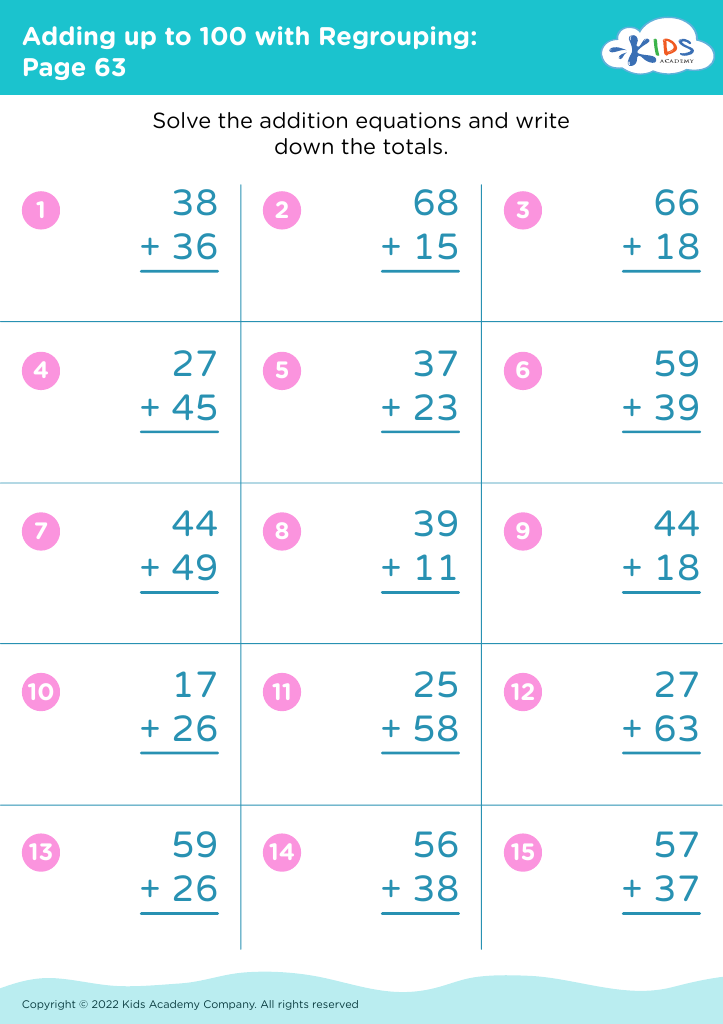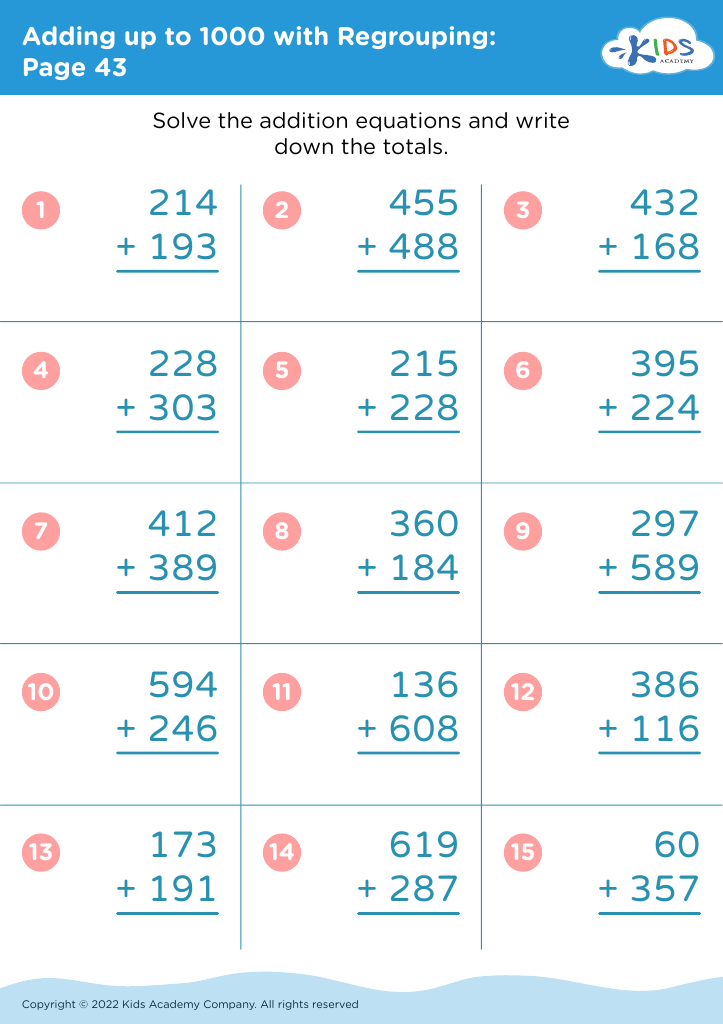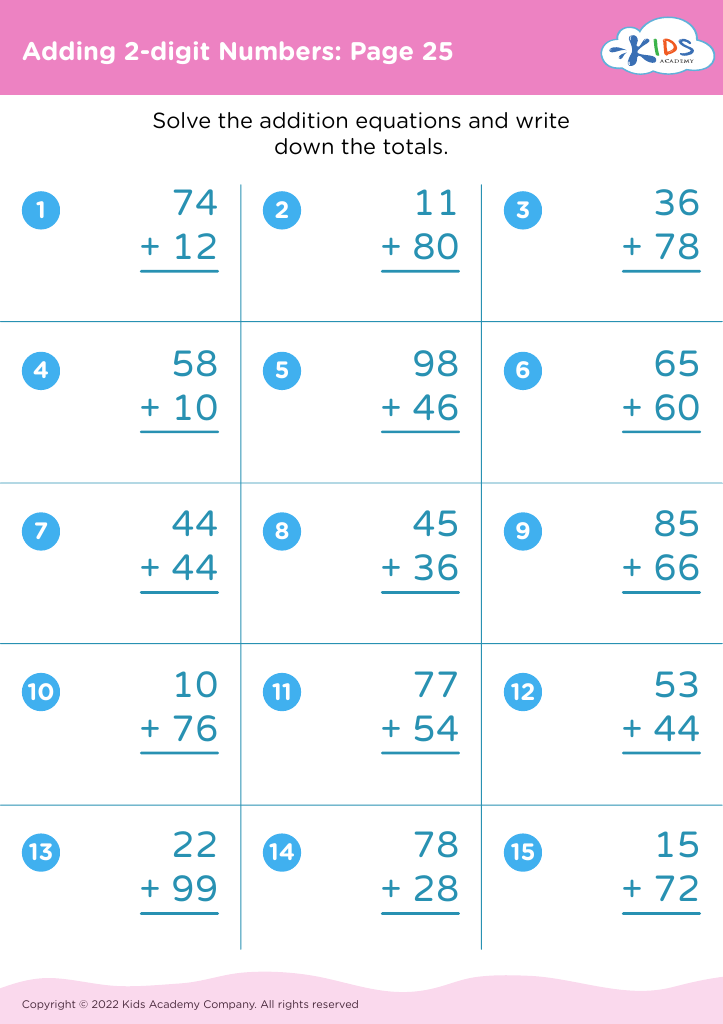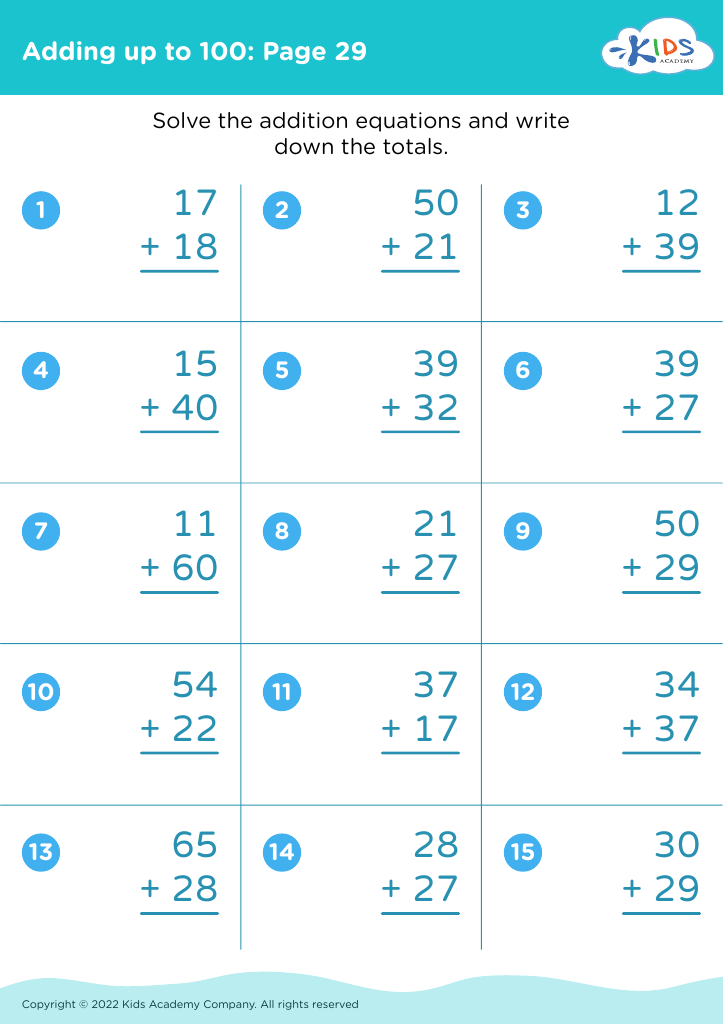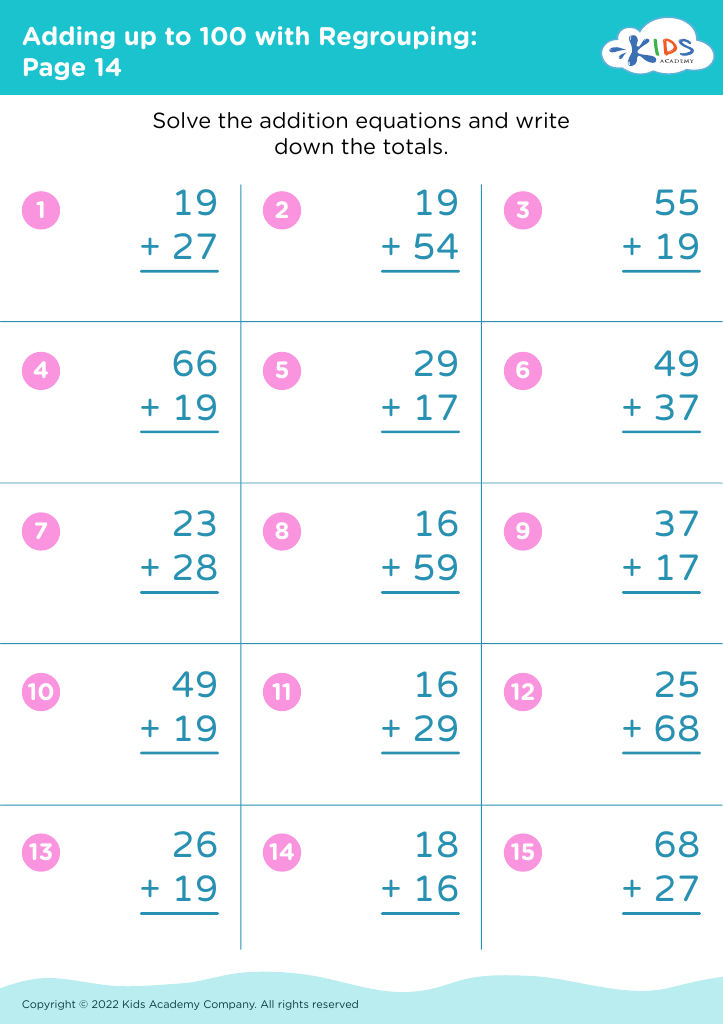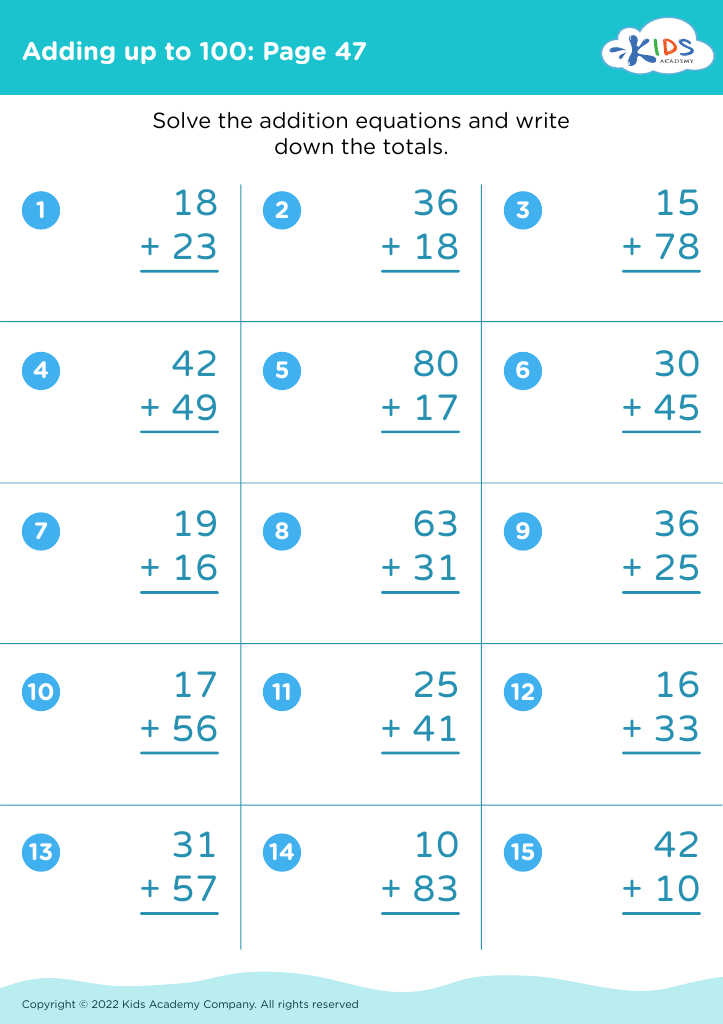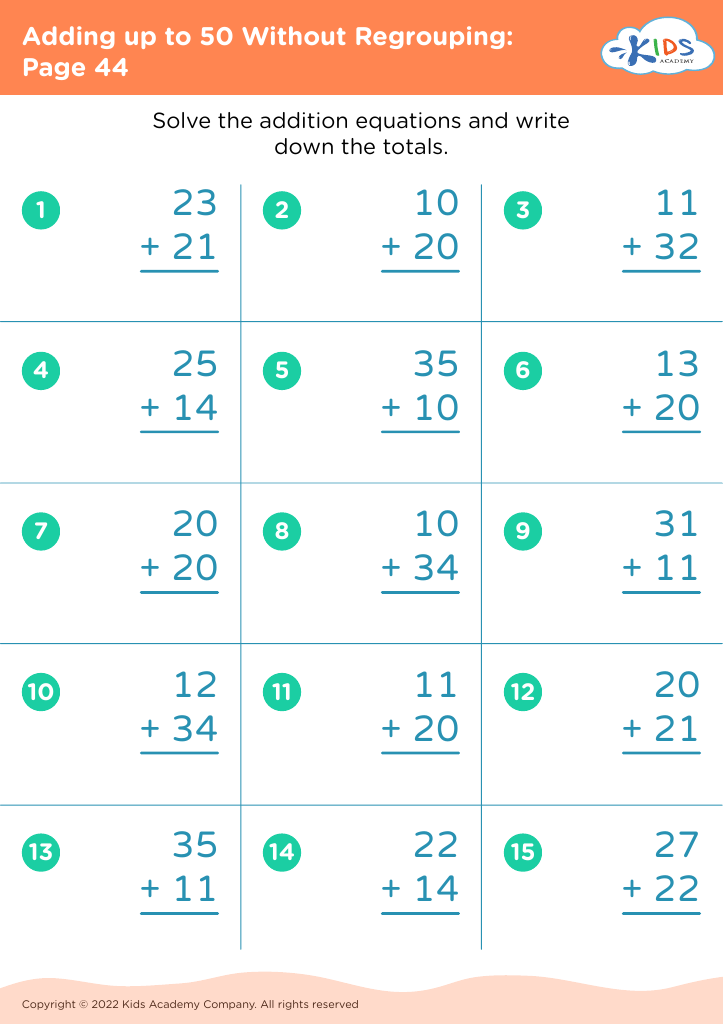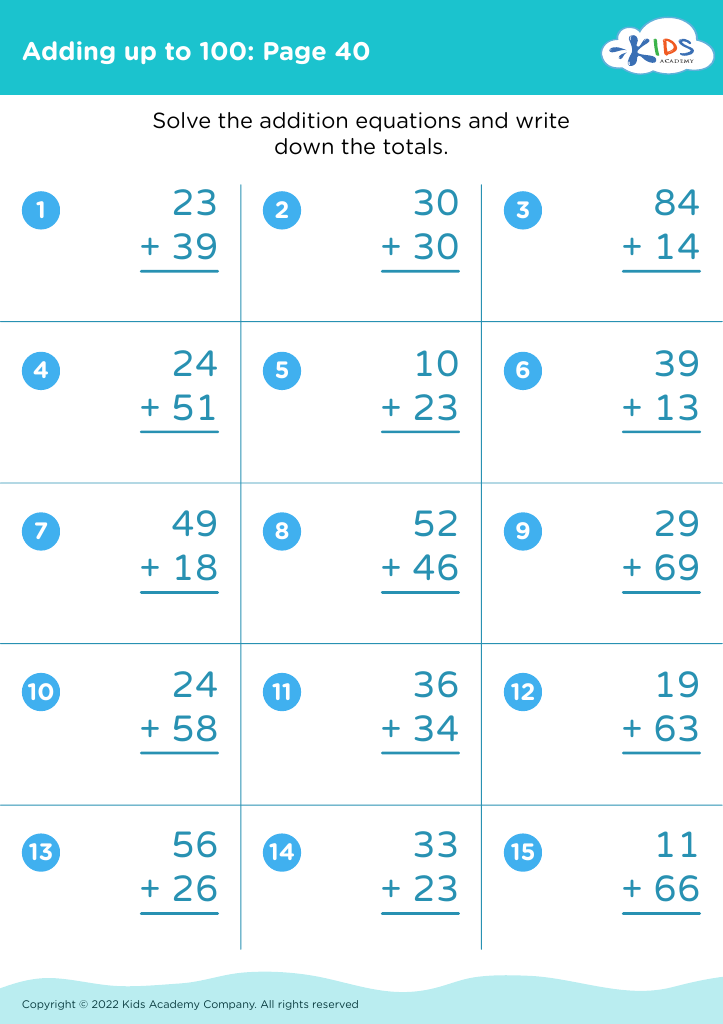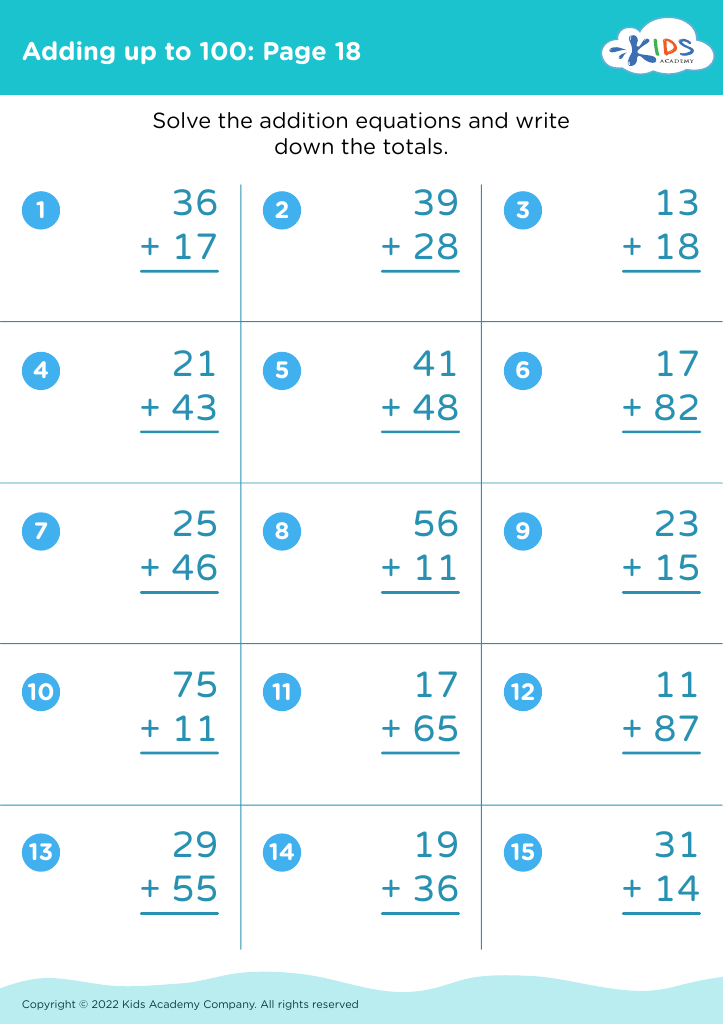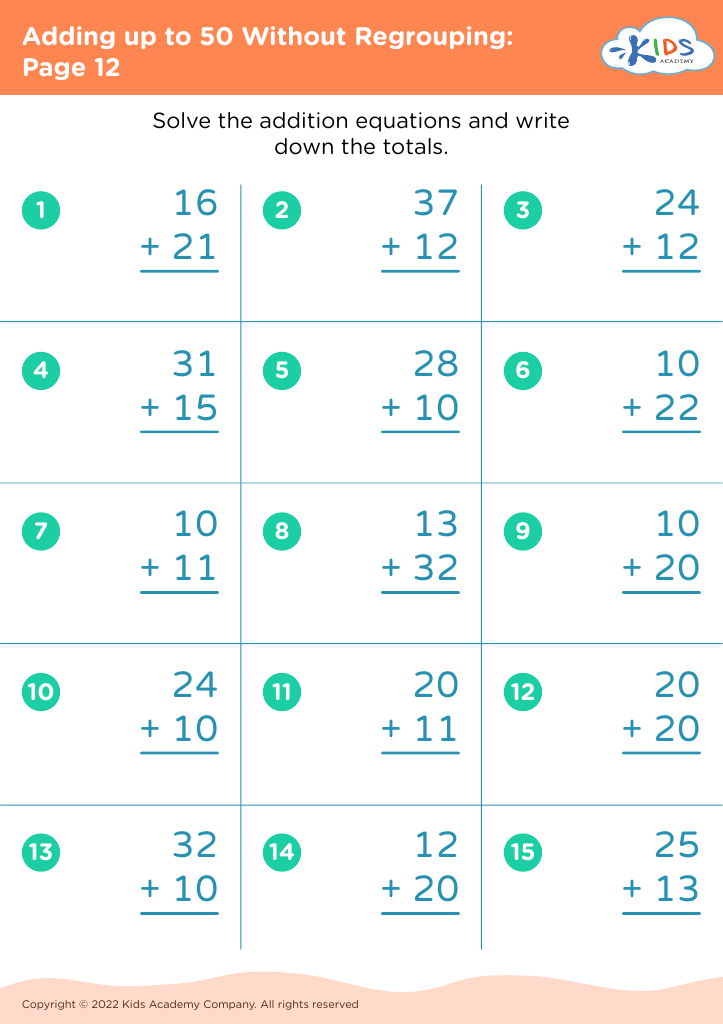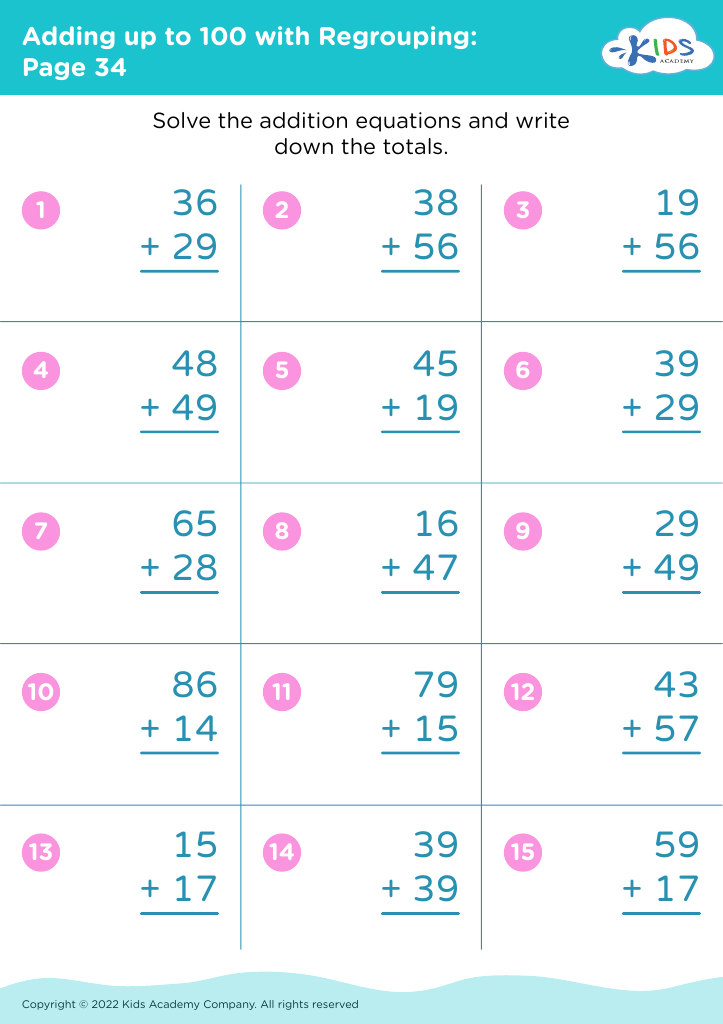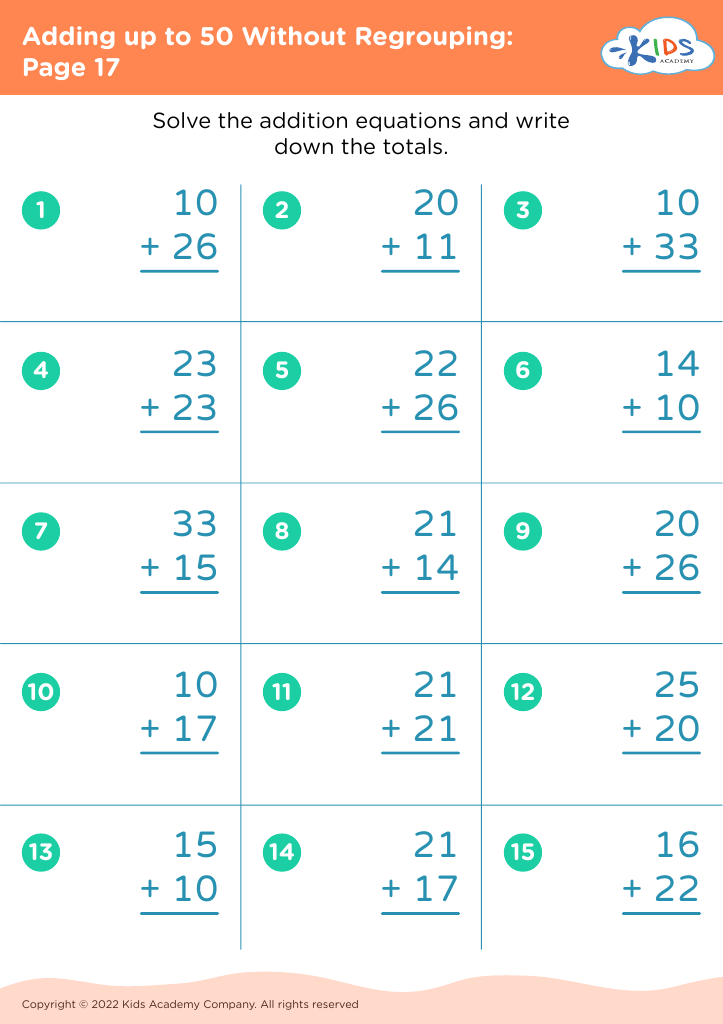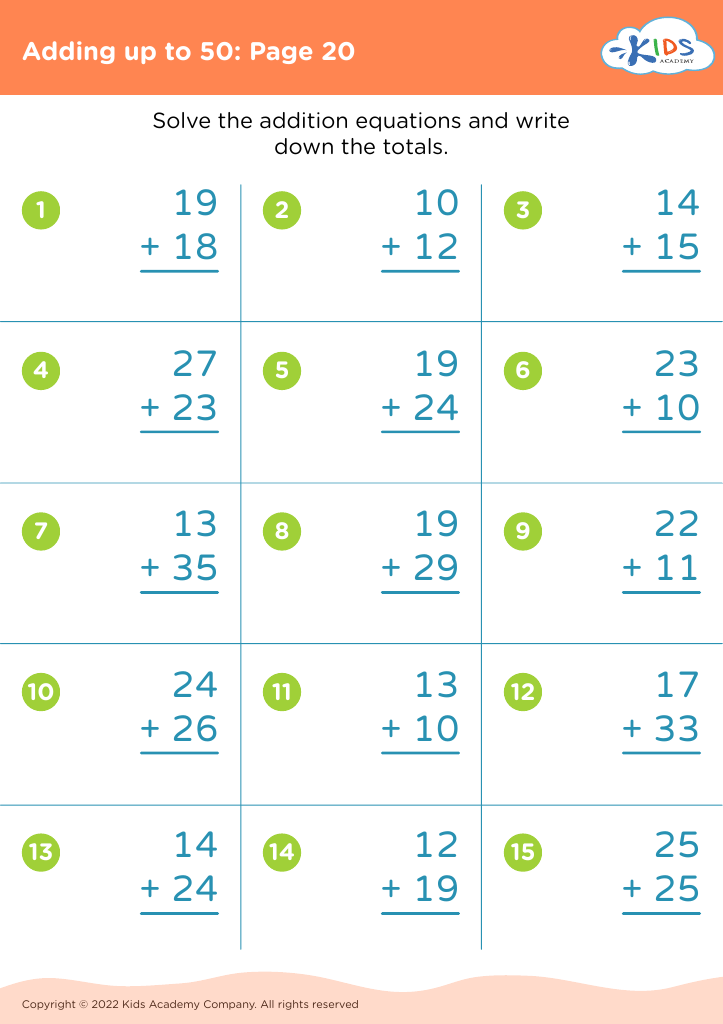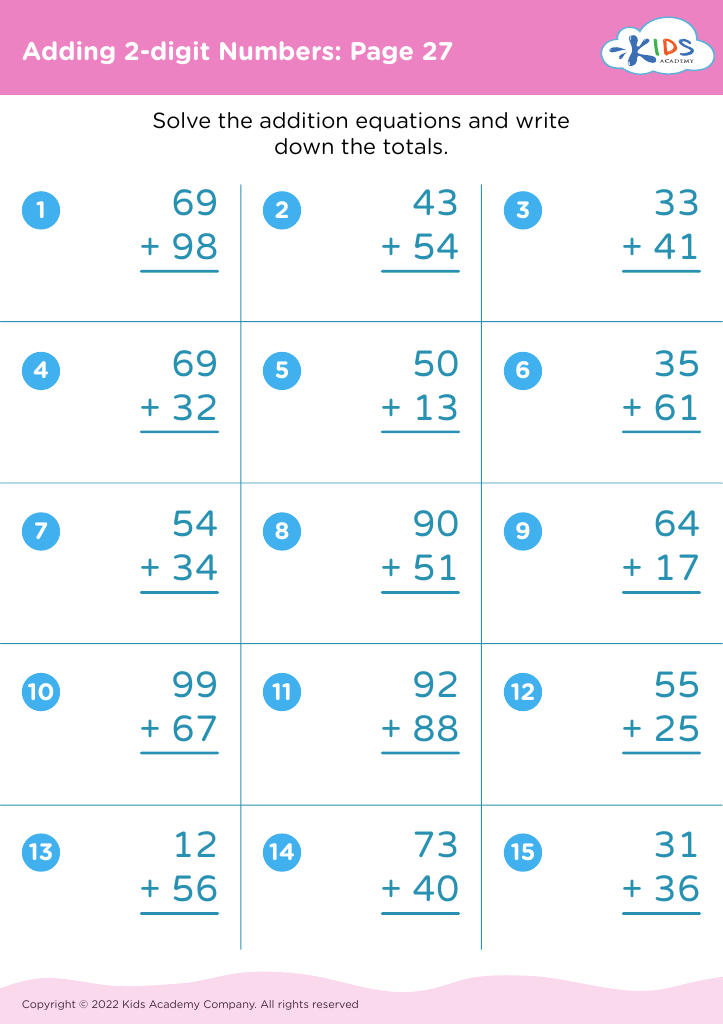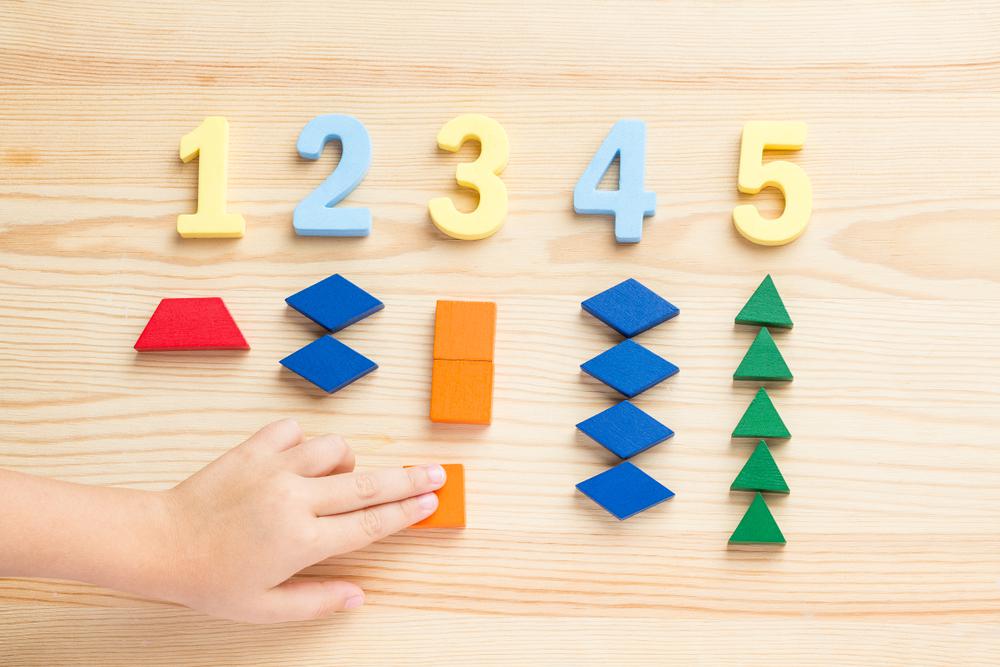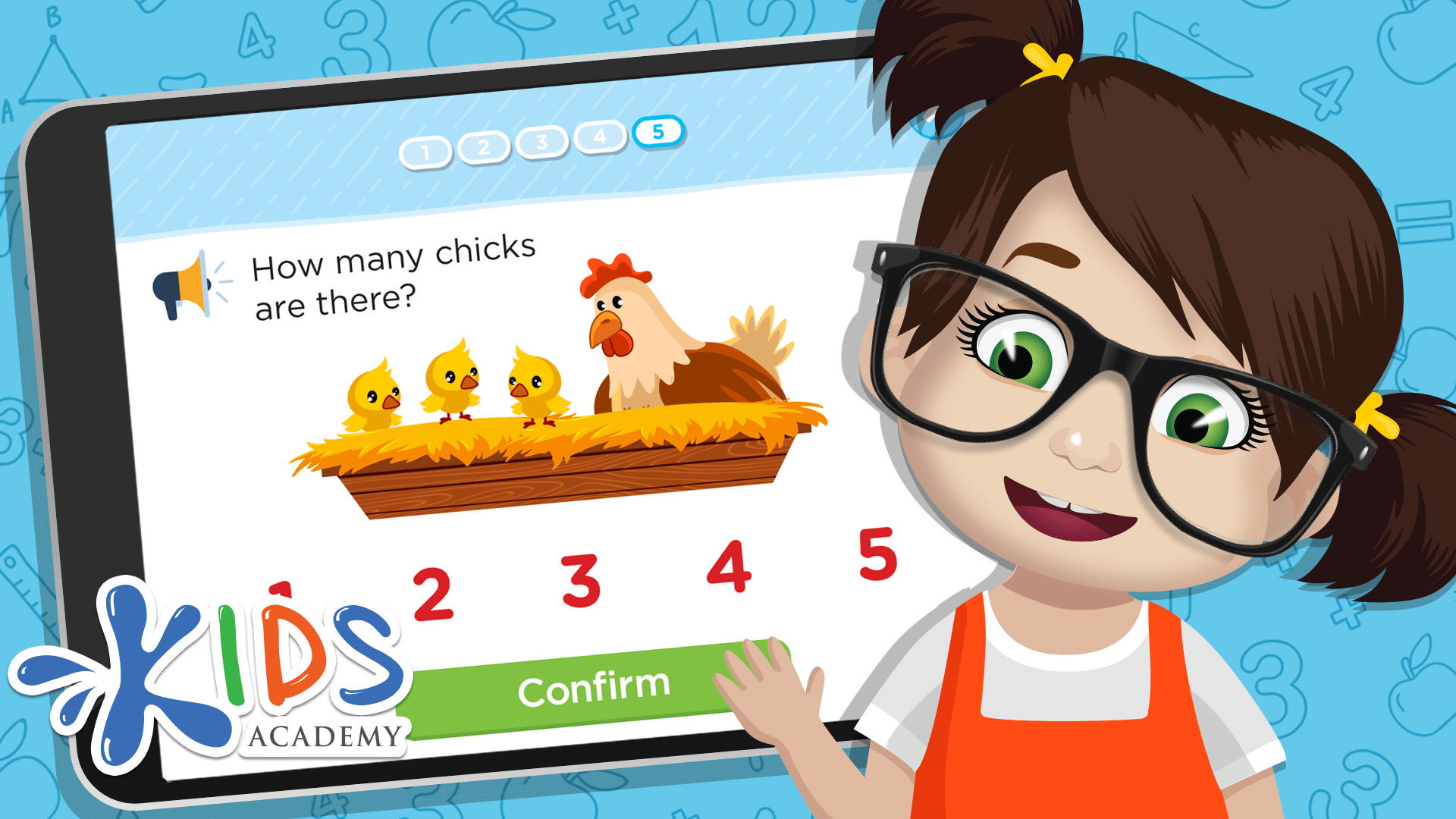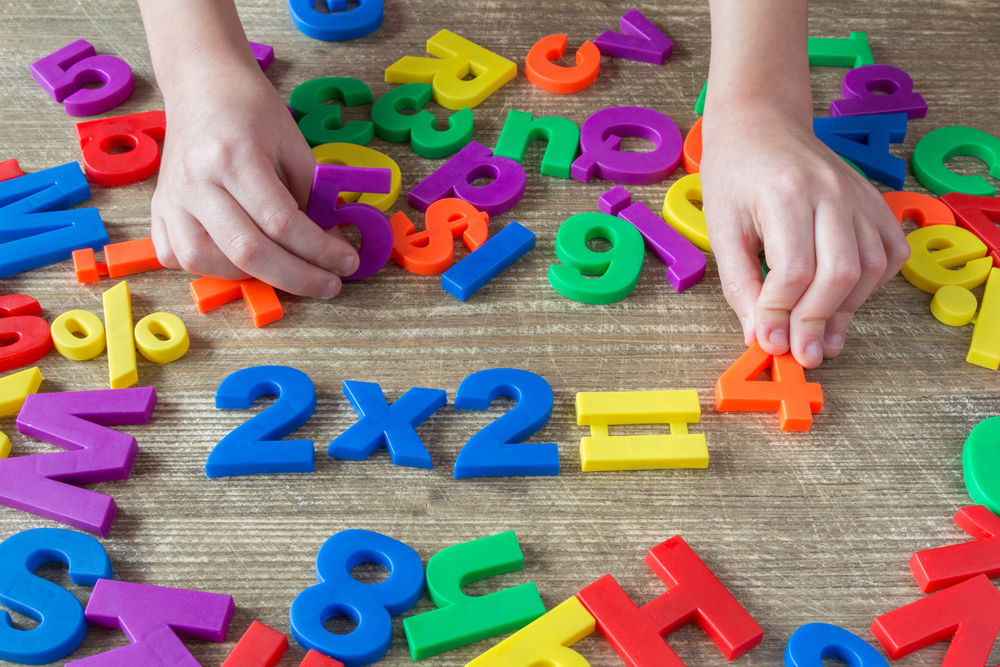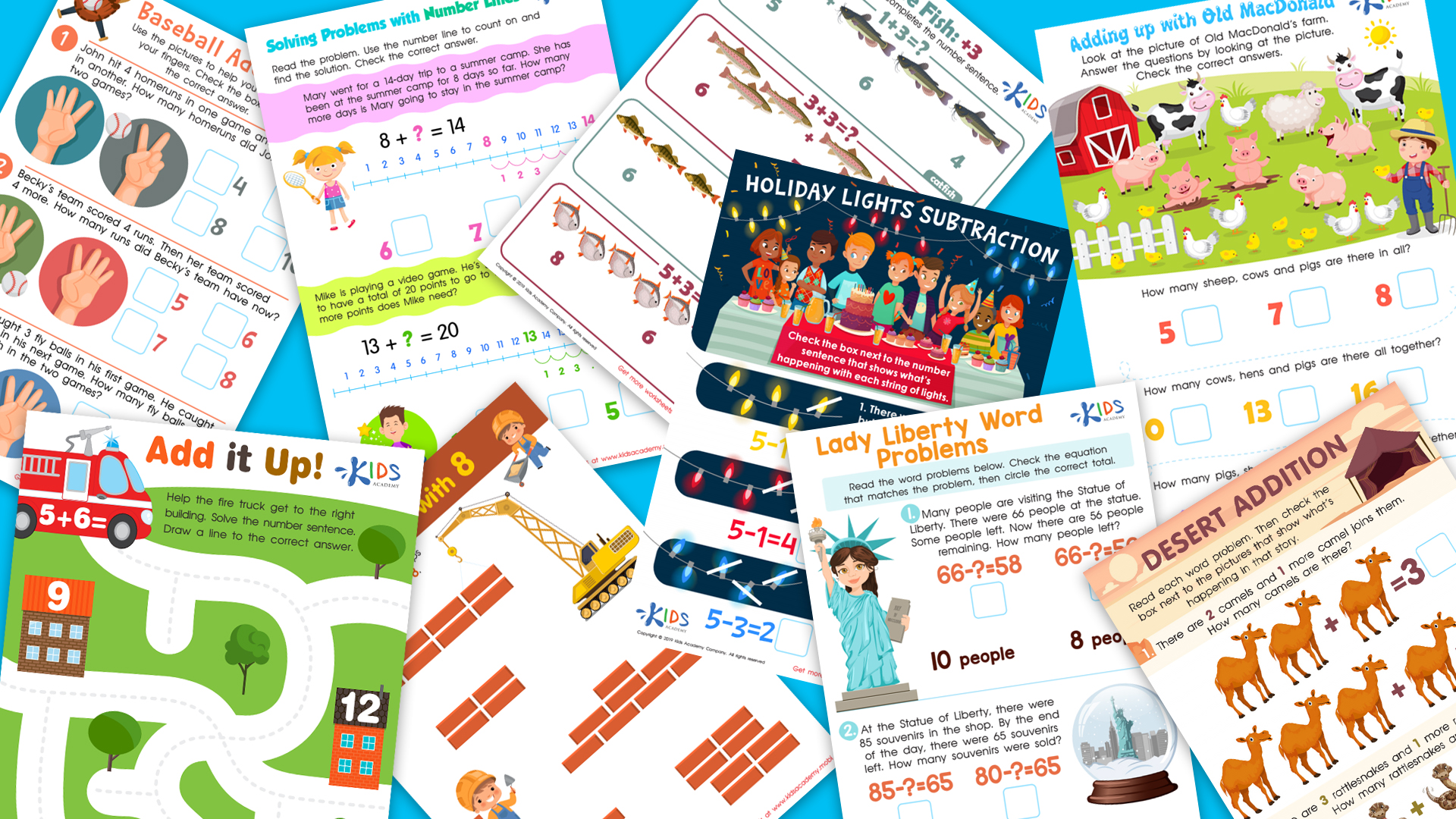Enhance number recognition Math Worksheets for 8-Year-Olds
17 filtered results
-
From - To
Unlock the potential of your 8-year-old with our engaging number recognition math worksheets! Designed to boost counting skills and foster number literacy, these worksheets offer fun and interactive activities that make learning enjoyable. Each worksheet features vibrant illustrations and varied exercises to cater to diverse learning styles, ensuring your child develops confidence in recognizing and working with numbers. Perfect for classroom use or at-home practice, these resources support essential math skills while encouraging independent thinking. Help your child embark on an exciting math journey and reinforce their foundational skills with our thoughtfully crafted number recognition materials today!
Enhancing number recognition for 8-year-olds is crucial for their mathematical development and overall academic success. At this age, children are transitioning from basic arithmetic to more complex concepts, and a strong foundation in number recognition is essential. It enables them to identify and understand both whole numbers and their relationships, which are vital for problem-solving and logical reasoning.
Parents and teachers play a pivotal role in this developmental phase. For parents, fostering number recognition at home through everyday activities, like counting objects or shopping, can make math relatable and enjoyable. It also helps to build confidence, reducing anxiety around numbers.
Teachers can adopt targeted strategies to engage children in reinforcing number recognition, aligning with their learning objectives. Engaging classroom activities, such as games and interactive exercises, can make learning fun, helping children to internalize concepts better.
Moreover, strong number recognition skills facilitate learning in other subjects, such as science and finance, thus preparing children for a well-rounded future. Ultimately, strong number recognition contributes to a child’s lifelong learning journey, impacting academic performance and fostering a positive attitude toward mathematics. Investing time and resources into enhancing this skill set is an investment in a child’s educational future.


